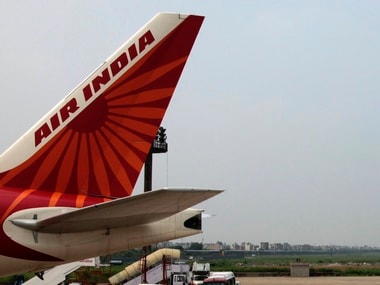**New Delhi:**Air India has been unable to lease 19 Airbus 320 aircraft, for which it put out a global tender last month, and may have to alter tender conditions before seeking quotations from lessors again.
The airline needs to replace 14 ageing A320 aircraft and another 5 A319 aircraft which it currently operates. The 14 A320s are all-Economy single Class configuration while the A319s are a combination of Economy and Executive Class configuration.
The airline needs to increase the total number of Economy Class seats on offer on several domestic and Gulf routes to counter stiff competition from low-cost carriers. In both these objectives of replacing ageing fleet and adding Economy seats, the new A320 fleet would have come in handy.
[caption id=“attachment_1103419” align=“alignleft” width=“380”]
 The airline needs to replace 14 ageing A320 aircraft and another 5 A319 aircraft which it currently operates. The 14 A320s are all-Economy single Class configuration while the A319s are a combination of Economy and Executive Class configuration.
Reuters[/caption]
A senior AI official confirmed to Firstpost that not a single lessor has come forward to lease brand new A320 aircraft, which the airline wanted to lease initially for six years.
“New aircraft means much less maintenance costs. But lessors probably do not agree with all of our lease conditions. We wanted brand new aircraft for six year lease and they would have progressively replaced the entire A320 family fleet. We will now hold discussions with lessors and put out another tender, perhaps with a longer lease tenure,” this official said.
Impact Shorts
More ShortsAir India first began using all-Economy A320 family aircraft in February last year when it converted two class aircraft having 146 Economy seats into 168 seaters. Now, if it succeeds in leasing the new A320 aircraft, it will have 180 Economy seats per aircraft.
According to a Bloomberg story recently, Air India last purchased A320s between 2006 and 2010. Adding new narrow-body planes will help Air India reduce costs that’s one of the conditions set by the government for approving a Rs 30,000 crore bailout through 2020. Sharklets are wingtips that help boost the range of single-aisle jets.
Low-cost carriers control more than 60 percent of India’s domestic skies, according to data available with the Directorate General of Civil Aviation.
Air India, the former monopoly carrier, had 18.9 percent share of the market in June behind IndiGo, Jet Airways and SpiceJet. IndiGo and SpiceJet use single class all-Economy aircraft to boost revenues. This no-frills, single class model where meals and other ancillary services are on payment basis, is precisely what AI has also begun following.
The airline official quoted earlier said after discussion with lessors, some conditions in the offer will be modified and a fresh approval will be sought from Air India’s board of directors before a fresh tender is floated. He declined to share the financial terms of this tender.
A story in the Economic Times last week spoke of global aircraft lessors hiking rentals on their planes in India after they found it difficult to repossess planes following defaults by Kingfisher Airlines. It also mentioned how this would impact fleet expansion plans of Indian carriers who typically either directly lease planes or get into sale and leaseback agreements with leasing companies after receiving deliveries of aircraft they have purchased. This story quoted a top executive at a budget carrier that is looking to lease planes as saying that rentals are already 5-7% higher than before the Kingfisher episode.


)

)
)
)
)
)
)
)
)



